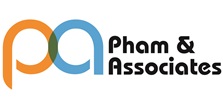
Trademarks: A Tool for Branding Your Practice
PTA recently launched a branding campaign designed to position physical therapists as the experts in human motion. As part of its branding campaign, APTA rolled out the tag
PTA recently launched a branding campaign designed to position physical therapists as the experts in human motion. As part of its branding campaign, APTA rolled out the tagline “Move Forward. Physical Therapy Brings Motion to Life.” Much like the APTA branding initiative, consistent use of recognizable branding by a physical therapy private practice can set it apart from competitors and communicate value, quality, and trustworthiness. Trademarks are an excellent vehicle for such branding. However, there are a number of issues to consider when determining how to best trademark a practice’s brand.
First, it is important to understand the difference between distinctive, generic, and descriptive trademarks and how these differences affect the practice’s brand. In selecting a name, slogan, or design as a trademark for the products and services offered by a practice, it is best to use a term that is distinctive (i.e., not generic or descriptive). The advantages of using a distinctive trademark are twofold: first, the practice is set apart from the competition with a unique trademark that can be protected under state and federal law, and second, a distinctive trademark helps the practice avoid trademark infringement issues. Distinctive trademarks are those that are fanciful, arbitrary, suggestive, or descriptive (with acquired secondary meaning). As discussed below, the strength of a trademark is based on whether the trademark is fanciful, arbitrary, suggestive, descriptive, or generic.
Arbitrary or fanciful marks receive the greatest degree of protection because such marks are uniquely associated with products or services and are nongeneric and nondescriptive. An arbitrary mark is a term used on a product or service that bears no relationship to that product or service, such as “Apple” for computers. A fanciful mark is a made up term used on a product or service, such as “Kodak” for photographic materials. These receive the strongest trademark protection because they are nondescriptive and nongeneric, enabling the consumer to associate a unique term with the associated product or service. In other words, these are the most recognizable trademarks because they are unique.
A suggestive mark receives strong trademark protection, although not as strong as that received by arbitrary or fanciful marks. Suggestive marks require some imagination on the part of the consumer to connect the nature of the goods or services with the associated trademark. An example of a suggestive trademark is “Chicken of the Sea” for tuna products. This trade mark is neither descriptive term nor arbitrary or fanciful; how ever, it gives the consumer some suggestion as to the nature of the product.
A descriptive mark is descriptive of a characteristic, quality, function, feature, purpose, or use of the products or services. An example of a descriptive mark is “Computerland” for computer stores because it describes the marketed goods. Ordinarily, descriptive marks are not eligible for trademark protection. However, distinctiveness may be acquired through the creation of secondary meaning—the association of an otherwise descriptive mark with a single source. This means that the consumer has come to associate the particular products or services with the commercial source, often through extensive advertising and promotion. For example, “Instant Messenger” was a descriptive mark, but through mass advertising it developed secondary meaning and acquired distinctiveness through its use in commerce. Consumers now associate “Instant Messenger” with AOL.
… to be continued
(By Paul J. Welk, PT, JD)


